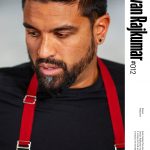Dara Gallinger
Our chat with Dara Gallinger taught us one thing above all else: we’ve been eating bread wrong our whole lives.
Having started her own bakery, travelled Europe to learn about bread, and dedicated 7 day weeks to building Brodflour since 2017, it might surprise you to hear that bread is not something that Dara Gallinger has always really cared about.
Instead of meeting a bread-obsessed baker, who has always lived and breathed baking, we found something rather different with Dara. Rather than being a baker who is lucky enough to run their own business, Dara is a businesswoman who saw an opportunity as a baker and is giving it every ounce of her effort. She has a goal and a remarkable amount of motivation, and so bread has grown into an obsession.
“I saw an opportunity, and then I went really deep into it and became passionate about it. But I think I would have brought the same level of interest, passion, and energy to any opportunity within the food world.”
But, while bread specifically might have been a passion she developed, food has always been important in her life. Having grandparents who were Holocaust survivors, food as always been sacred and a focus in her family. At university, she was always keen to create food experiences for people, making meals for friends and having them sit around the dinner table.
So, with food generally, her love has always existed, and so she’s confident she is following the right path in life. But it is the way she is following that path that is truly unique with Dara. “I’m learning how to do it in a way that could potentially be a big business and maybe change food systems and change the way people eat, and be able to capitalise off of it. But the food business is really tough, and sometimes you have to dig really deep. This is not for everybody.”

As we said at the start, Dara is more than a baker. She has a dream, a keen business mind, and the drive to learn absolutely everything required to achieve her dream.
But before Brodflour, her career was a little more corporate, and this might help to explain where her business know-how comes from. In her 20s, she had her first crack at the entrepreneurial life by starting a concierge service in Montreal that worked with the film industry. She would handle things like catering on set and taking actors and directors out for dinners, and in this way made great connections in the industry.
After 3 years of running this first venture, Dara then had a brief change of pace. And it was quite the change. She walked into Joe Beef in Montreal, and asked them to do their gardening for the summer. While they initially didn’t believe she genuinely wanted to do this, they ultimately agreed, and so she dabbled in gardening for a little while. However, this wasn’t to last long. Joe Beef were about to launch their first cookbook, and so Dara became their in-house PR person. She ended up working there for a total of 8 months, and it was this experience that really opened her eyes to the story behind food – an important building block in eventually opening Brodflour.
“That was where I think I transitioned into this place of really understanding the intersection between building a food business that makes money, but also one that is incredibly strong and [has integrity] around food, where it comes from, who’s growing it, [and] how’s it being manufactured.”
With a taste for the journey of food and a hunger to make a difference, Dara decided this was the direction she should pursue. So she studied, got an MBA, and then went back into the corporate side with a job at Sobeys.
“I went and found myself a job in corporate grocery, with the best of intentions to try to make a positive difference in that space…So I spent about 3 or 4 years working for them, and had a very positive experience. Sobeys is an amazing company.”
But, after those 3 or 4 years at Sobeys, Dara found herself feeling she could have a bigger impact elsewhere. She had lofty dreams and grand ambitions. And it was around this time that she was approached by the person who would become her partner in Brodflour.
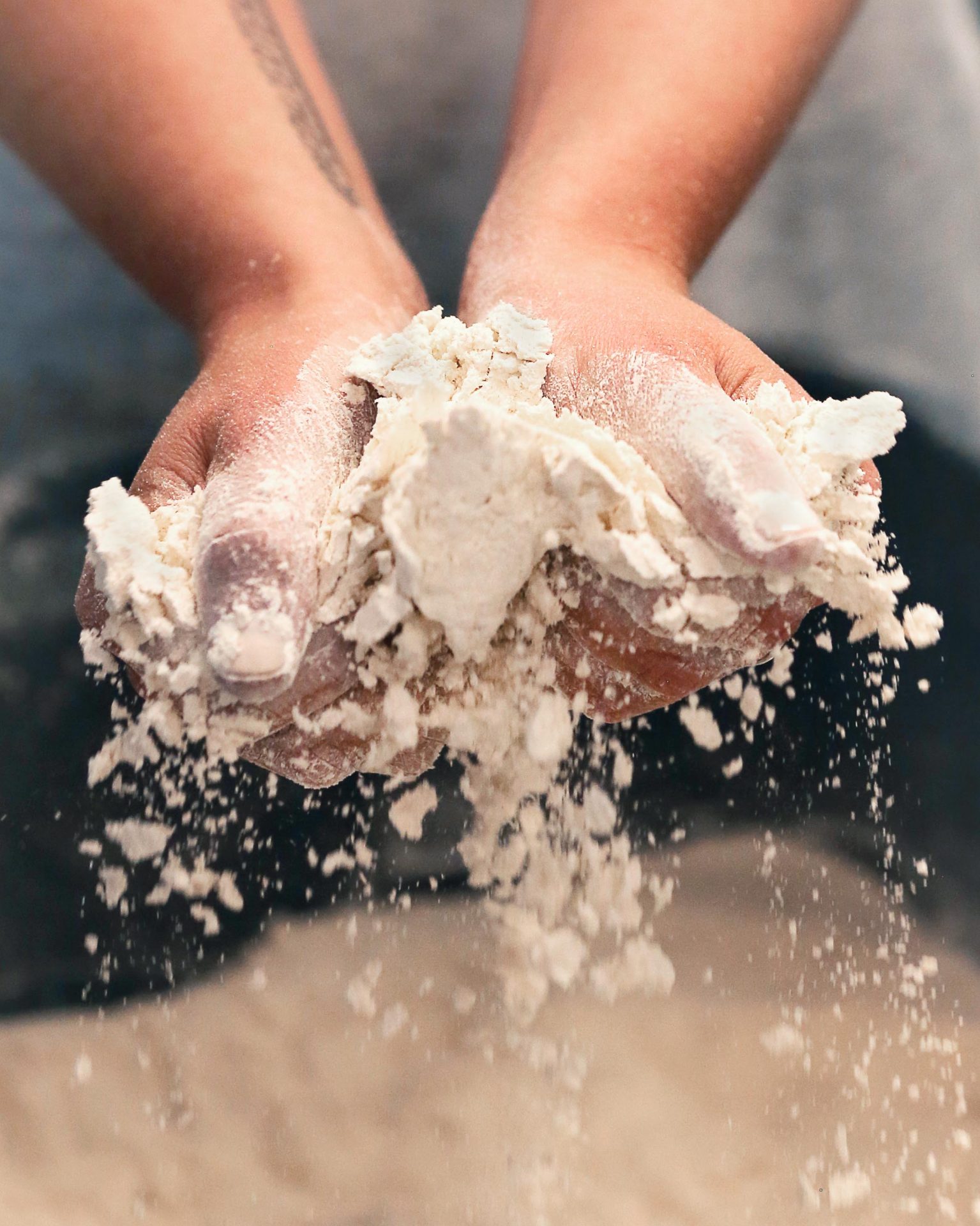
Ronnen Harary, of Spin Master toys, is Dara’s business partner. As an established businessman, he was quite motivated by the idea of selecting talented young people who were capable of building a business, and giving them the platform to do so. Dara was one of those talents, and having always been impressed by bakeries and coffee shops, he went to Dara with a bread-related proposition.
“[He] had come to me and said “do you think we could take on the Starbucks and quick-service-restaurants (QSR) of the world with a food business that is centred around bread?’”
“I actually thought that it was a bit of a crazy idea, because bread is so highly stigmatised. When you start thinking about opening a QSR, which is supposed to be appealing to the masses, to have bread – which is such a stigmatised product in a category that is in such significant decline – I thought: “I don’t know if you can do that.””
But someone as driven as Dara doesn’t just leave it there. She said she’d be willing to explore the opportunity, and to see if there was a product that might be able to change the game here.
“So I went and travelled the world and my time in Europe, specifically in Scandinavia, is where I learned the biggest difference between how North Americans do bread, and how Europeans do bread.”
As she explained to us, the priorities between these two places are completely different. In North America, artisanal bread makers talk a lot about the talent of the baker; they talk about sourdough and fermentation. But, according to Dara, this is not so with our European friends.
“Then you go across the Pond, and every single person you’re talking to – sure they are saying there’s talent and sure they’re saying that sourdough is important – but they’re not talking about that as the number 1 thing. They are talking about the relationship with the person milling their flour. And that’s where there’s this massive disconnect here in North America. I think maybe because there is no bread culture here.”
This was where things got really interesting with our conversation with Dara, and she gave us the crash course on bread we never knew we needed. It turns out that the direction North America has taken bread is almost entirely the incorrect one. The industrial revolution brought with it big box grocers, and there was demand for products that were cheap and shelf stable in all categories, and this included bread.
Yet, while there has been push back on this pursuit of low costs and shelf stability in most other areas, bread was left behind. “In the last 20 years, we have pushed back against that and we’ve tackled produce, we’ve tackled meat, we’ve tackled cheese, in terms of going back to who’s growing it, how it’s being made, how animals are being treated. We care about that and we’re willing to pay more for that. But for some reason, we haven’t had those expectations around flour-based products. We just don’t know anything about it. All we know is that it’s bad for you, and we just kind of avoid it. So this was the lost category, as far as I’m concerned.”

So, what are the Europeans getting right? Dara continued our induction into the world of real bread: “the people who are making bread are talking to the people who are milling their flour. Those people are milling flour in stone mills, so they’re maintaining the integrity of the grain, and they’re using it quite quickly after it’s been milled in their baking. So you’re actually getting the benefits of the freshness of the flour.”
And Dara experienced all of this for the first time on her travels. When in Europe, she met a Swedish baker called Robin. She spent a lot of time learning what he was doing, and also finding inspiration in the fact you can be successful in making bread the right way. After adding a few more strings to her bow in her time with him, he then recommended she travel to a small town near Salzburg, in Austria, to see the place where they make the stone mills used in bread-making.
“So I added Salzburg to my itinerary, and I went to Austria, and drove to the mountains and found this place that was manufacturing these stone mills. And they took me on a tour of the facility, and they were milling a batch of flour when I got there. So they said to check it out.”
She went to see the flour action, and it was here she had her ‘eureka!’ moment. The moment that made her realise the bread business wasn’t such a crazy idea. “So I stuck my hand in and I touched fresh-milled flour, and I was like “oh my god. This is not what I know flour to be.” That’s that moment. You say in marketing you have reasons to believe. And you can’t deny that there is something different about fresh-milled flour, than the flour we are getting at the grocery store.”
“It was at that moment I think that I touched the flour, that set me on that “okay there’s something here, this needs to be the centre of what we do.”” And that was it. Dara was all-in on bread, and all-in on Brodflour.
And when we say all-in, we mean it. Now she had seen how bread was meant to be done, and how good it could be when done right, there would be no cutting corners.
“A lot of bakeries that have stone mills in them in Canada and the US…but they mill wholegrains, and they mix with normal flour. So that’s a good start, but if we can’t be successful doing it all ourselves, we shouldn’t bother at all. Because then it’s just a marketing thing, and that’s not good enough…I want it to be real, or else what’s the point. Just do something else.”
And so, with her European trip concluded, her doubts over the venture answered, and many lessons learned, she returned with the drive to do this, and to do it right. “So I came back here and said “look, if we’re going to do this, [and if] this is disruptive and innovative…it has to be about the flour. It’s about nothing else other than the flour.” And so that’s why we put a stone mill in the bakery, in front of the customer, and we taught ourselves from not knowing how to use it, to not only using it, but being able to make spectacular bread out of it.”
When you consider her work ethic, it’s no surprise that she went from zero to bread-master so quickly. Not only has she been working 7 days a week, starting at 7am, every day since Brodflour opened, but she’s also trying every job in her business.
“Janet Zuccarini told me once that her best advice she could give was to make sure you do every job in your business. Make sure that you’ve done it for long enough that you know how to do it. So as we’re launching wholesale, I’m doing the driving. I did that for 3 months, every day, 7 days a week. Do the bread deliveries, to be able to build the logistics for someone else to do it. So that’s what I’ve been doing a lot for the last few months.”
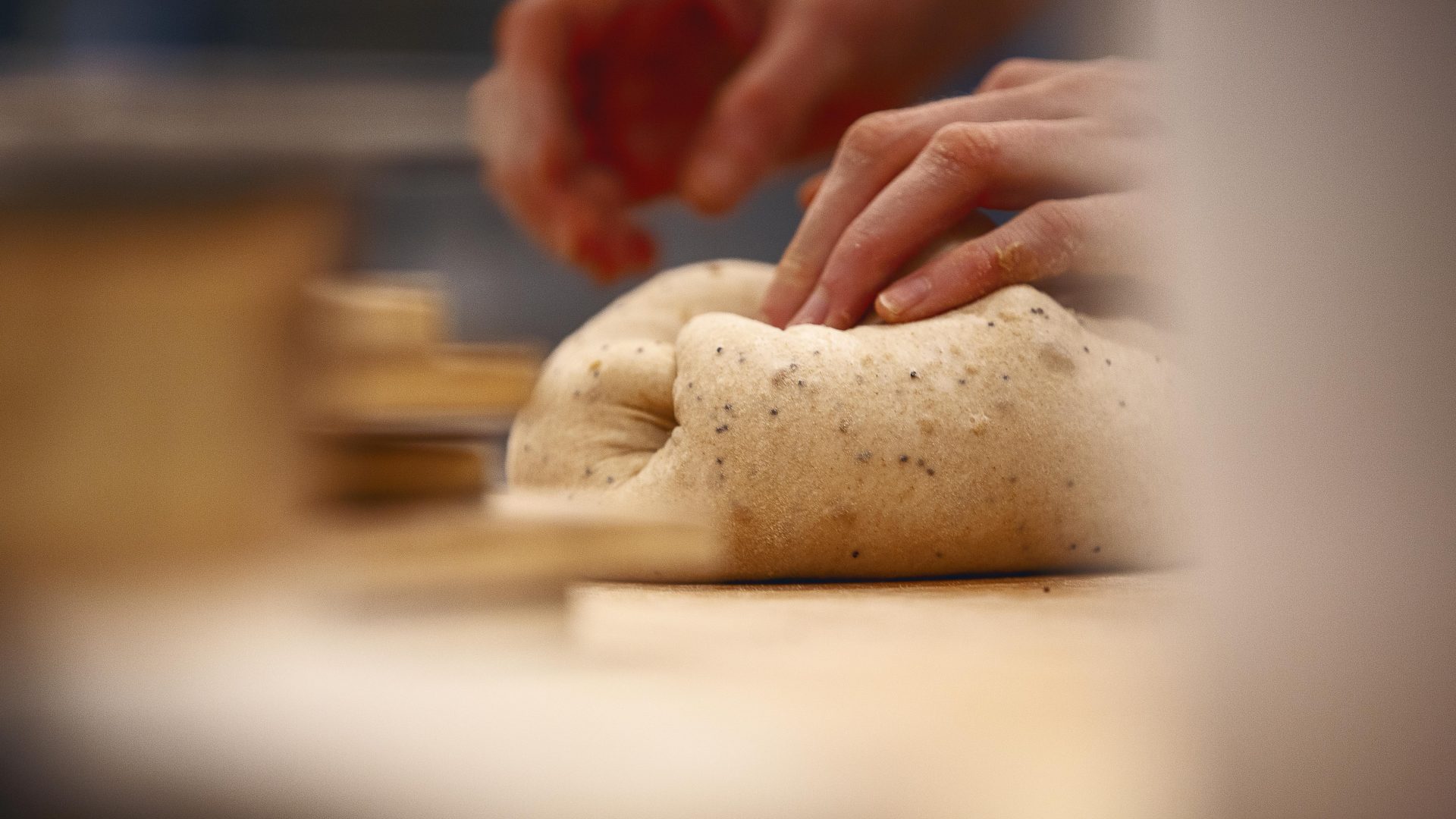
To want to start such an ambitious venture in the first place is one thing. But to then commit to it so completely, learning absolutely everything possible from scratch, is quite another. And Dara wasn’t even finished with sharing her bread knowledge with us. Next, we moved onto the all-important ingredient itself: flour.
“So the grain itself is in 3 parts: the endosperm, the germ, and the bran. The germ and the bran is what we remove in industrial milling. That’s what is alive. That’s what has the flavour, the nutrients, the minerals, but it’s also what makes it harder to work with, and it’s also what makes it spoil. It’s also what makes it not white.”
“You remove that, and you’re left with the endosperm. And the endosperm is just blanket white. No nutrients, no minerals, nothing. It’s just pure gluten. And that’s what we bake bread with for the most part.”
This is a point worth emphasising, as it’s the key difference with the way Brodflour makes bread. The part of flour that actually gives flavour and nutrients is removed in industrial bread-making. We were pretty shocked by this revelation. The food industry, with its pursuit of low cost and shelf life, actively went about removing the best parts of bread. So when we say we’ve been eating bread wrong, we absolutely mean it.
We thought this scenario seemed ridiculous, so naturally we wondered why this had come to be. Why has this bread scandal been playing out under our noses for so many years? Well, a little more know-how from Dara explained this one.
“The margin of error is much bigger when it comes to using fresh-milled flour. I think that’s one of the reasons why we don’t use fresh-milled flour. The reason for the roller mill and for industrial milling in North America was to be able to get a product that was shelf-stable, stark white, and also [adding the benefit] that anyone can bake bread. You can literally take this very stable product, this one recipe, and just do it the same way a machine can do it and get the same thing every time.”
“But with the fresh milled flour, it’s incredibly volatile. You’re not going to get the same thing every single day, so right off the bat you’ll see that our bread doesn’t always look the same every single day. Sometimes it’s bigger, sometimes it’s flatter, but we celebrate that as far as that’s what bread-making is. It’s the environment, it’s the quality of the flour that day. [And] it still tastes unbelievable.”
So, bread-makers have been trying to make lives easier for themselves by using less volatile flour, that gives a very predictable product time after time. Brodflour, however, embraces the challenge and the unpredictability.
Because with this unpredictability comes the reward of flavour and substance. And one bite of a Brodflour loaf makes this abundantly obvious. They use only fresh milled flour, at most 1-2 days old. After 14 days, the germ oil that’s left after milling – the oil that gives the nutrients, minerals, and flavour – is gone. So not only is their bread made the right way, and made with the right stuff, it is also made with the freshest possible ingredients.
But just how much flavour is there in proper bread? Well, we were absolutely blown away by the taste. The bread we ate here was like a completely different type of food, barely recognisable from the stuff we’ve been picking up from the shelf. It fills you up, and doesn’t bloat you out or make you feel awful for eating it.
In fact, bread is supposed to have so much flavour that you can actually taste the difference in where a grain has been grown. Just how coffee or wines have unique flavour profiles depending on their region, bread is exactly the same. Which. Is. Crazy.
“Now [we have] the germ oil intact, using it fresh, stone-milling it, maintaining its integrity, [with] very low intervention manufacturing, you can actually taste the difference between the grains. You actually can taste the terroir. A red fife that was grown [from our farmer] in Peterborough tastes different from the red fife that was grown in Manitoba, because it’s different soils, different climate. You can start talking about bread the same way you talk about wine. The same way you talk about chocolate, coffee. All of a sudden, bread is brought to be more of a high value item. Grains and flour – all of a sudden that has a flavour profile.”
So what all this means is that gradually, over time, we have completely lost our relationship with bread. We have forgotten what it’s supposed to be, and accepted an entirely inferior substitute. And it is this problem that Dara is solving, and is utterly meticulous in doing so. Sitting with her, we felt as though there was an entire world hidden from us for all these years. A flavour profile on a loaf of bread? Madness.
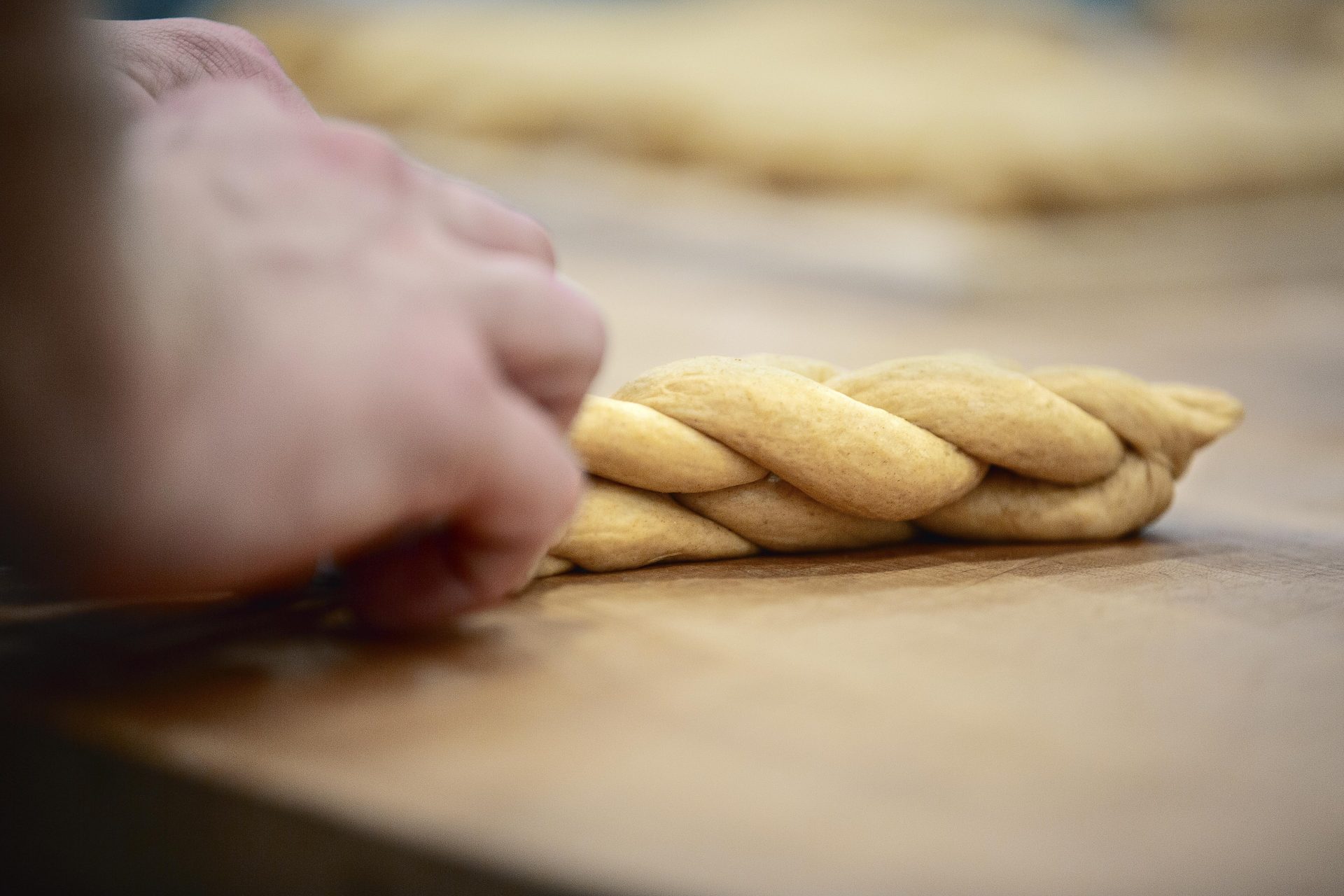
But, as should be clear by now, don’t expect to be sampling various supermarket breads and having a profound tasting experience. “[Supermarket flours] don’t taste different. They couldn’t possibly, because that quality of what makes it taste different is not in it.”
Instead, once you’ve tasted what Brodflour is baking, there is honestly no going back. Bread has been changed for us, forever.
“To me, we’ve redefined bread through how we process the flour, and how we use that flour once it’s been processed. So, again, to someone in Europe this isn’t new. They’ll just look at you like you’re crazy…”Yeah we use fresh-milled flour, who cares.” But that’s a huge thing for us here in North America.”
It seems to us that Brodflour might be leading the charge in a bread revolution, and that is certainly the goal for Dara. We asked her specifically about what the future holds for her bakery, and she replied with her typical business savvy.
“Now the question is how do we become a successful business, and then also tell the story, and then also educate. And then how do we capitalise off the increase in demand or willingness to pay more, in the next 5 to 10 years.”
“If we do it right, we could have a massive impact on agriculture. Right now, farmers are growing commodity, modern wheat that they hate growing. They’re making very little money off of [it]. They’d love to be growing heritage and ancient grains, but there’s no market for it. So…can we help make that market?”
These goals are certainly ambitious, but that comes as no surprise. In her mind, she is asking big questions about the future of bread and flour, and working out where Brodflour can fit in and capitalise. “Should a person be able to go in their pantry and get flour that’s been sitting there for a year? Is that okay? Do we sell our flour in grocery stores in refrigerators? In the fresh section beside fruits and vegetables? Is that what success looks like?…I don’t know. A lot has to happen. But certainly, if we get people talking about it and asking for it, and we create a scenario by which we can continue to keep growing, and opening more stores and opening new markets, then I would say that that is the beginnings of success.”
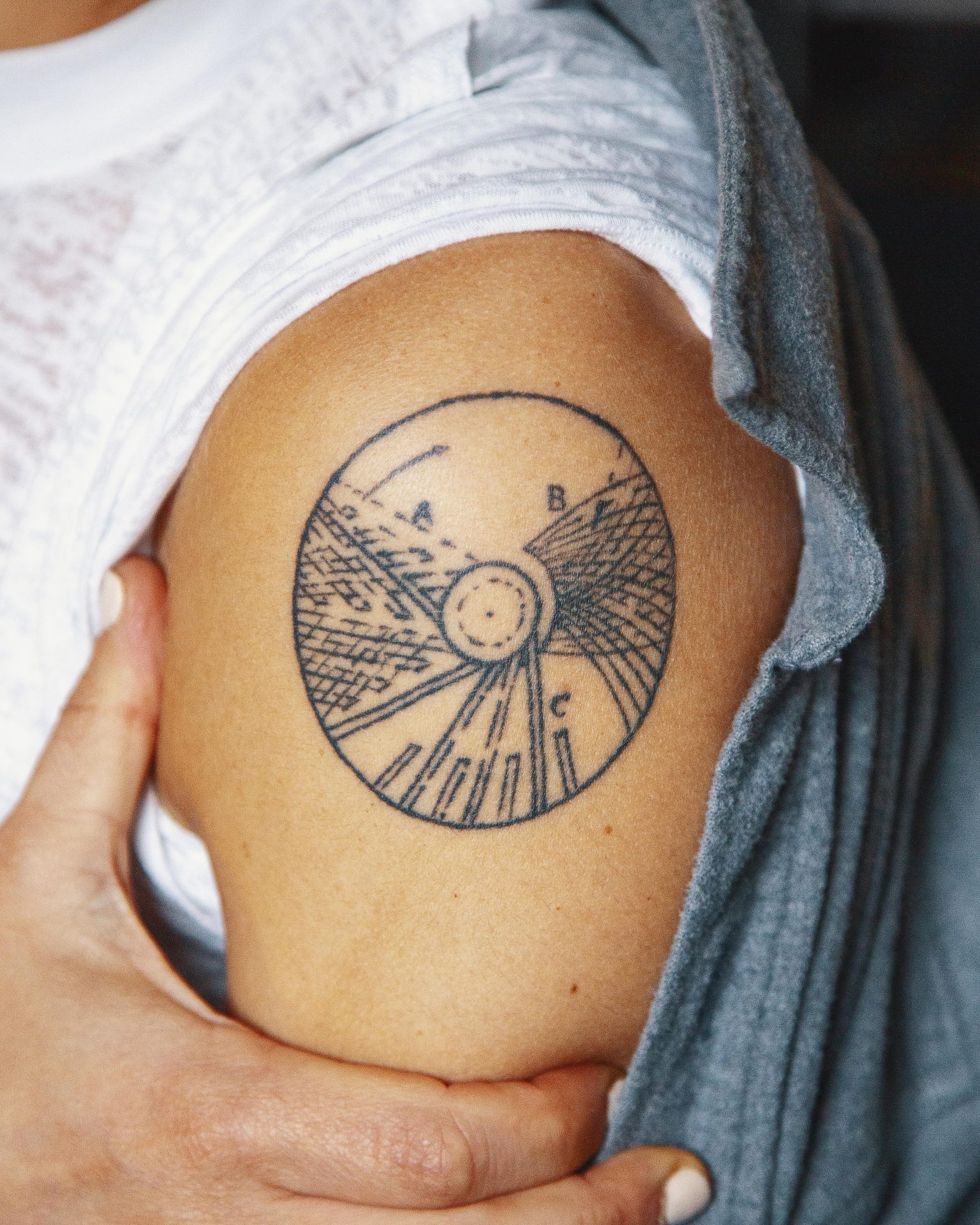
But just in case we haven’t sold you, we’ll let Dara give you a final reason to care.
“it’s delicious, and it’s elemental. It’s played such an important role in the building of civilisation, in religion. If you look into many religions, bread is so holy, and so celebrated. It’s such a warm food. It brings people together. Communities were built around bread and bread-making. In the old days there was a community mill, a community oven…that was how people lived. So it’s elemental. There’s something that’s so simple about it. And if you get back to the basics, and we can go back to the way of making bread where we are eating a healthy, nutrient-dense product, then you don’t need to buy so much of the other stuff.”
So, let’s start this bread revolution with Dara Gallinger as our fearless leader. She’s gone from barely even eating bread, to knowing everything about it. So complete is her immersion in bread that she even has a technical drawing of a stone mill as a tattoo. She saw the opportunity, grasped it with both hands, and has relentlessly pursued solving the bread problem ever since.
Our eyes have been opened. Out with the days of flavourless bread substitutes, we say. Make bread great again.

